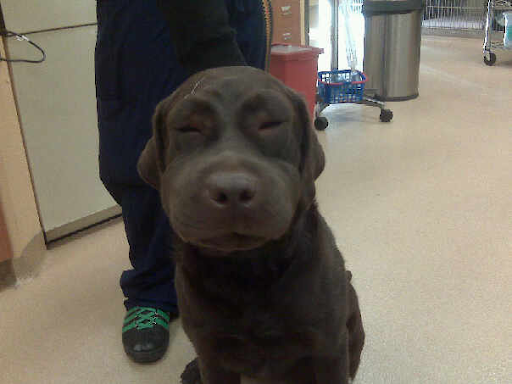
21 Mar My Dog Has a Swollen Face or Mouth—Here’s What it Could Mean
The causes of facial swelling in dogs and cats are numerous and can vary significantly in size, shape, firmness, and location. The significance can also be quite variable, ranging from minor to life-threatening. Here we will break down the most common causes of a swollen face or mouth, what the swelling might look like, and what you should do about it.
9 Common Causes of Facial Swelling in Dogs and Cats
1. Dental Abscesses
Abscesses form around tooth roots when a tooth becomes infected with bacteria. Infections may be caused by tooth fractures, periodontal disease (gum disease), or because a tooth has died. Tooth death is usually due to concussive forces disrupting the blood supply to the tooth directly or causing inflammation which crushes the blood supply inside the tooth.
Swelling in the mouth is typically localized to the area around the root of the tooth. It is usually quite firm and painful to the touch. Additionally, the infection can cause the skin and soft tissue structures in the local area to become swollen. This type of swelling is usually confined to the quadrant of the face where the tooth is, i.e., the right side of the face is swollen when a right upper tooth is infected, or the right jaw is swollen when a right lower tooth is infected.
Sometimes the infection can cause a draining tract, which is an opening in the skin over the abscess where pus drains out. This can happen inside the mouth at the gums overlying the tooth or outside the mouth through the skin. Either way, the abscess takes the path of least resistance to the outside. The most common places we see these draining tracts are under the eye and under the lower jaw. Often the abscess can be extremely painful until it ruptures, relieving the pressure.
You may see that the pet stops eating, is only chewing on one side of the mouth, or that your dog or cat is reactive to being touched in that area. Your vet may see signs of gum disease, a discolored tooth, or a tooth fracture, but not always. Sometimes a tooth can look perfectly healthy from the outside but be very infected under the gumline. This is one of the reasons why it is so important that when your pet undergoes dental therapy, full mouth dental x-rays or cone beam CT scan are performed.
Treatment of a tooth root abscess involves extraction of the tooth or root canal therapy, sometimes followed or preceded by a course of oral antibiotics.
2. Allergic Reactions
Acute allergic reactions in dogs are commonly caused by insect or spider bites or by contact allergies to grasses or other environmental allergens. They can also be caused by items pets have eaten, medications, or, rarely, by vaccines. Allergic reactions in dogs generally have two manifestations on the skin of the face and body, and they are also frequently accompanied by vomiting and/or diarrhea. Allergic reactions like this are considered a type 1 hypersensitivity reaction.
The first manifestation is hives, which look like raised bumps on the skin. Usually, they are 1-3cm in size, rounded, and sometimes they are quite itchy. If the skin/fur color is pink/white or light tan and the coat is short, you can see that the hives look red, but this is very hard to see on darker colored skin or in pets with longer coats. They are typically distributed on the face and head, front legs, and sometimes the chest and belly. Commonly the lip margins and eyelids are also quite puffy.
The second manifestation is generalized facial swelling (called angioedema or angioneurotic edema). In this case, the entire face swells up, sometimes quite dramatically. Usually, the area around the eyes and lips are the most dramatic, making the pet look like they’ve just come out of a boxing match! Angioedema is not typically itchy or painful; usually, the pet doesn’t even seem to notice anything is wrong!

Figure 1This is a 10 year-old Labrador with angioedema/facial swelling secondary to an allergic reaction
Allergic reactions can occur within 30 minutes of exposure to the allergen but can be delayed up to 24 hours after exposure. Allergic reactions are easily treated by your vet giving a series of injections to counteract the allergic reaction. Often the pet will go home with a few days of allergy medication as well. If the allergic reaction was to a medication or vaccine, your vet will avoid it in the future. If it is medically necessary, they may pre-treat your pet with Benadryl or steroids before giving them a vaccine or other medication.
Thankfully for dogs and cats, throat swelling and airway closure are NOT typically part of the allergic reactions that I just described. True allergic anaphylaxis (which tends to manifest itself in dogs and cats as acute collapse without any changes to the skin or airway), while somewhat common in people, is extremely rare in dogs and cats and may only be seen by vets a few times in their entire career.
3. Snake Bites
Angioedema can also be seen secondary to venomous snake bites (rattlesnakes, copperheads, etc), although these are treated very differently than allergic reactions. Snake bites can be a critical life-threatening emergency. If you know or suspect a venomous snake has bitten your pet, please immediately bring your pet to the vet. Do not try to suck out any venom or place a tourniquet if was bitten on a limb.
Depending on where you live and what species of snakes are present determines how life-threatening the envenomation is. Thankfully, here in Colorado, we mostly have Prairie Rattlesnakes. Their venom is not as dangerous as that of other species found in other states at lower altitudes, such as the Western Diamondback.
Death of dogs from Prairie rattlers is less common, though their venom can be deadly for cats and humans. In southeast Colorado, the Massasauga rattlesnake and the Midget Faded rattlesnake can be found along the Utah border. Information about the toxicity of the venom of these species to dogs and cats is lacking, as these snakes are much less common.
4. Tumors
Tumors of the face and mouth are another commonly seen cause of facial swelling in dogs and cats. Tumors can be benign (non-cancerous) or malignant (aggressive, cancerous). They can form on any tissues of the head, the skin or subcutaneous tissues, the bones, the lips, gums, tongue, lymph nodes, blood vessels, salivary glands, ears, eyes, muscles, etc. You can even get tooth tumors called odontomas!
These swellings are usually confined to the area around the tumor and, based on the tumor type, can be hard or soft, sometimes painful but usually not. Most often, tumors are solid, not fluid-filled. Your vet will help you determine the best diagnostic plan to figure out what kind of tumor it is and what should be done about it.
5. Trauma
Trauma to the face can be caused by many different things, such as being hit by a car, bitten by another animal, shot with a gun, kicked in the face, etc. You can see anything from focal swelling around a puncture wound to whole-head swelling from being clipped by a car bumper.
In addition, there may be tooth fractures, bone fractures, lacerations to the skin, lips, gums, tongue, etc. Usually, these injuries are painful, and there may be bleeding or infection if it isn’t found treated right away.
Your vet will help figure out the extent of the injuries and develop a plan to treat them. That plan may include referral to a specialty practice like Animal Dental Care & Oral Surgery for advanced imaging (CT scan or MRI) and surgery.
6. Foreign Objects
On occasion, embedded foreign objects can be found in the face of dogs and cats. These scenarios generally result from overzealous chewing of sharp things like sticks that penetrate into soft tissue.
This type of swelling can also be caused by plant material like foxtails (grass awns/seeds) that get stuck in the fur of the face or body crevices (like the eyelids or ears) and can burrow their way under the skin and through soft tissues. They can create an abscess as they migrate that may appear similar to a tooth root abscess, either with focal swelling or more extensive localized swelling, and may rupture out the skin.
Removing foreign objects can sometimes be very tricky. The swelling isn’t always right at the object but can be a draining tract to an adjacent location. Your vet will have to locate and remove the object to resolve the infection, but in the head, sometimes this can require advanced imaging techniques such as CT or MRI.
7. Sialocele
A sialocele, also called a salivary mucocele or ranula (pronounced sigh-aloe-seal and mew-ko-seal respectively), is an accumulation (or pouch) of saliva in the tissue due to a rupture in a salivary duct or salivary gland. These are most commonly discovered as squishy swelling under the jaw or the tongue. They are not typically very painful except in the very beginning.
Sialocele occurs most commonly in German Shepherds and mini Poodles and tends to affect dogs 2-4 years of age. The cause is not officially known, though trauma damage could be one explanation.
Diagnosis is made by your vet aspirating the swelling with a needle and syringe and drawing out stringy saliva. These are treated with surgery to remove the affected salivary gland. Sometimes surgery on the pouch where saliva is collecting is necessary as well. If left untreated, they can become chronic and be very difficult to resolve in the future.
8. Craniomandibular Osteopathy
Craniomandibular Osteopathy, often shortened to CMO, is an uncommon disease of the bones of the jaw and head, most frequently seen in small breed dogs. It is most common in West Highland White Terriers, where it has an inherited cause. Scotties, Cairns, Bostons, and Bull Terriers are also overrepresented. It can be inherited in these breeds (though that has not been scientifically proven).
CMO causes swelling of the bones while they are growing, and so is usually seen in puppies from 3-8 months old. The swelling can range from mild to very severe, but it is extremely painful in all cases.
Pain when opening the mouth or chewing is the most common symptom, but sometimes excessive drooling is the only symptom observed. In addition, visible swelling of the jaw or face and non-specific signs like decreased appetite, fever, and lethargy may be present.
Diagnosis is made via x-rays of the skull, demonstrating typical bony changes. Treatment primarily revolves around pain control, as this is a self-limiting disease. They will grow out of it; however, sometimes the pain is so severe that owners elect to euthanize their dogs rather than try to wait it out.
9. Hypoproteinemia
One last cause of facial swelling I will briefly mention here is in cases of severely low protein. Normally there are proteins in the blood that, through oncotic pressure, hold water in the bloodstream inside our blood vessels. However, several diseases, including severe parasite infestations, severe kidney, liver, intestinal, or skin disease, cause massive loss of those blood proteins.
As a result, that oncotic pressure of the blood is lost, and the water portion of the blood can leak out into other places in the body, one of which is the subcutaneous tissues under the skin. This can be seen anywhere in the body, including the head and neck. When this happens, it is often called pitting edema, as you can push a finger into the swelling, and the impression of your finger will remain.
Often these pets are very sick, and this is one of many symptoms that can be seen. If the proteins in the blood can be restored, the edema will resolve rapidly.
Veterinary Dentist in Denver
If you notice your dog or cat has developed swelling around their face or mouth and suspect this swelling to be related to a dental or oral condition, give us a call Animal Dental Care & Oral Surgery in Denver. Our board-certified veterinary dentists possess the experience and diagnostic equipment to provide your furry companion with the best possible treatment options in veterinary medicine. Give us a call today.
Photo by Ana Martin on Unsplash (3/21/2022)

